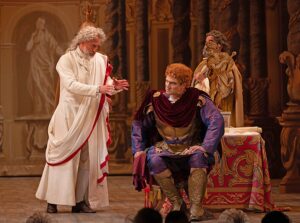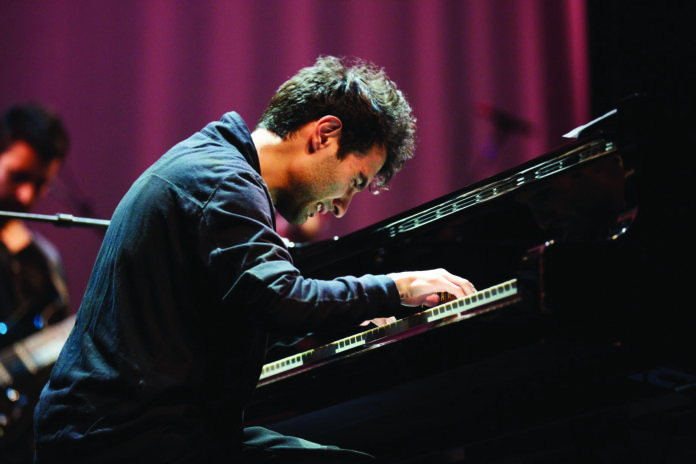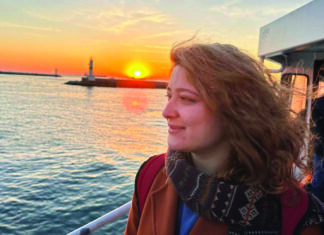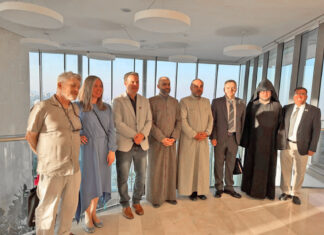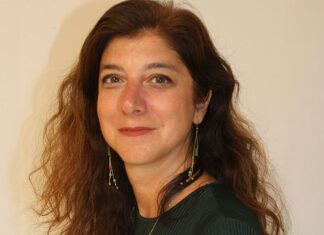By Aram Arkun
Mirror-Spectator Staff
BOSTON—The music of Armenian pianist and composer Tigran Hamasyan was the focus of the Berklee Middle Eastern Festival on March 8 at the Berklee Performance Center in Boston. Hamasyan, a crossover artist who composes in a wide range of genres, and often combines them in his works, so that he is not easily categorized, energetically sang and played the piano along with faculty and three student performance groups from Berklee. These groups were the Berklee Middle Eastern Fusion Ensemble and the Pletenitsa Balkan Choir, both founded by Berklee Associate Professor Christiane Karam, and the Berklee World Strings, conducted by Eugene Friesen, also a professor at Berklee. Hamasyan has a dedicated following in the world of jazz and fusion music, and among Armenians, so the event was sold out.
Karam later described Hamasyan’s work as unique. She said, “To me Tigran’s gift is that he does not follow. He is somebody who is very anchored in his own voice. He is very free in taking in what influences him and what means something to him what truly resonates to him and he just follows that. He does not respond to anything that is not absolutely true for him. He has that strength of saying yes to this and no to that.” Karam intended the Berklee festival to show as much aspects of Hamasyan’s work in the different stages of his career as possible.
Consequently the evening’s program was divided into three parts. The first set of compositions were pieces that were primarily in a jazz and progressive rock mode. The Middle Eastern Fusion Ensemble brought in non-Western instruments like kanun, duduk and laouto to join Western ones, while Hamasyan performed on the piano and sang. The Pletenitsa Balkan Choir sang in certain pieces. After the intermission, Hamasyan played a piano solo from his album “An Ancient Observer,” which will be released later this month on Nonesuch Records.
His “Luys I Luso Suite,” based on Armenian sacred music from the fifth century (Mashdots) to the twentieth (Gomidas), was next on the program, and it marked a shift in Hamasyan’s work toward classical music. It was very different in instrumentation and atmosphere from the earlier pieces. Released originally in 2015 on ECM Records, Hamasyan performed it in 50 concerts across the US and Europe. Following in the line of other Westernizers, he created polyphonic arrangements for melodies.
The evening closed with the world premiere of a new arrangement for strings and woodwinds of Hamasyan’s piece Lilac. It was only written at the end of January, so the Berklee musicians only had a short period of time to learn it.
